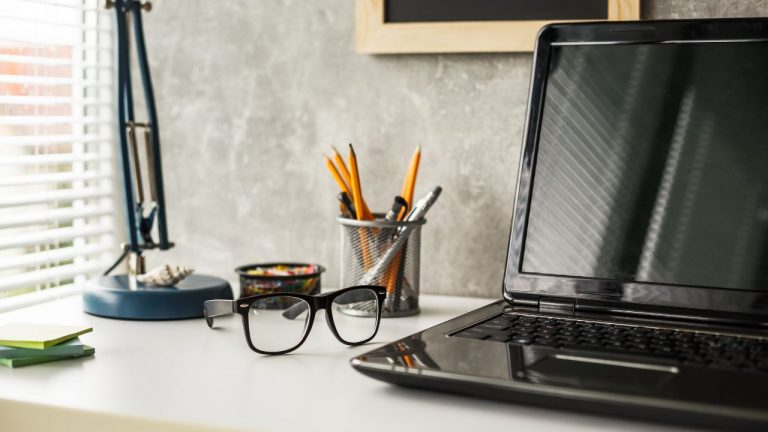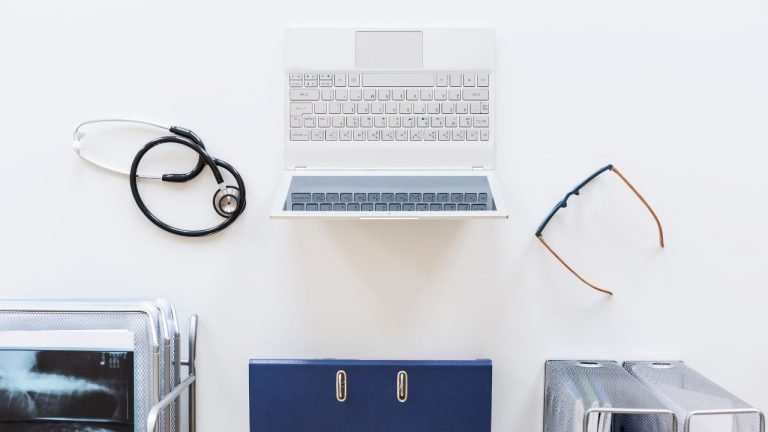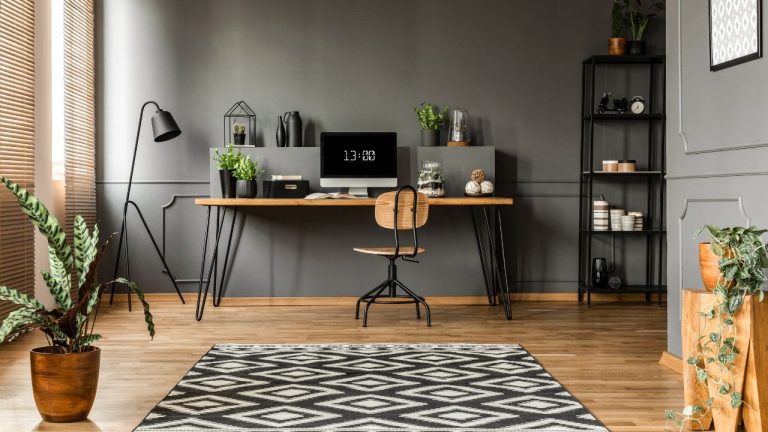8 Ways To Organize Home Office Paperwork Like A Pro!
Nothing’s better than a well-organized office. But dealing with a huge number of documents each day makes it harder for us. Of course, your office doesn’t look well-maintained if papers are laying on the desktop or you can’t find a pen. Don’t worry. We are about to share 8 secrets to organizing your home office paperwork like a pro!
Keeping the papers and stationery items in their designated place is the best way to organize paperwork. For that, you can use a separate filing cabinet. If you think, a cabinet is too expensive, try using binders instead. You can categorize the papers and put the same group inside one paper binder.
Your home office shouldn’t be neglected when it comes to organizing paperwork. After all, it’s the gateway to a peaceful working experience. So, stick with us if you want to boost your productivity within the home office. Here we go!
How Do You Organize Home Office Paperwork Like A pro?
Organizing paperwork doesn’t have to be so tough if you have the right tools. You only have to know where the documents at hand should go. In the following section, we have described 8 effective ways to organize home office paperwork.
You can incorporate every technique we mentioned in your office space. Or, you can pick and choose depending on the condition of the office. Nonetheless, go through the techniques and let us know which one you liked better.
1. Separate Your Printer
One big lesson every new remote worker learns is that not every item should be on the desk. Yes, it also includes the printer. There are two reasons behind it. First, printers take away a large space. It makes your desktop look more cluttered. You have less space to organize everything how you want.
Second, all the papers you are printing remain on the desk surface. It’s a huge mess. You barely have enough space to go through a file comfortably. In this situation, putting the printer in a side cabinet is the best option. It doesn’t have to be a closed cabinet. A side table would do just fine. Now, all the printed papers stay away from your desk.
2. Stationary Containers
You want to highlight a sentence but can’t find the marker anywhere. Does it ring a bell? If yes, then you are in need of a container. It can be a plastic holder with multiple sections. You will store all the regular and jell pens here along with erasers, markers, staplers, paper cutters, etc. This simple step is going to make your day less hectic.
You can put paper clips with those office supplies as well. It’s better to keep every stationary item together. That way, you know where to look when you need to staple the papers together or mark a quote. Try to keep the container around the desk. A drawer sounds fine. Hence, you don’t have to leave the chair to get any supplies.
As for the pen holder on the desktop, try to keep 2-3 pens within it at max. Everything else should be stored in this container inside a drawer.
3. Color Coding Books
Give the top shelf of your cabinet to your books. Since you don’t need access to books every day, the top shelf is the right place for them. We would suggest you only keep a few important books inside the office. The book you are currently reading recently finished or like to take reference from should be on the shelf. Any book that’s not interesting anymore needs to move somewhere else.
Now, one way to organize them is color coding. It means you have to keep the same color books in a group. There’s no scientific reason behind it. Normally, people do it for aesthetics. It looks way more organized. But you can skip it if you want.
Another technique you can apply is grouping the books with similar titles or subjects. It will be easy to locate a specific book on the shelf.
4. Binders
Don’t have a filing cabinet? That’s okay. Not everyone has enough space in the home office for a separate cabinet. In that case, using a binder to organize your documents seem like a good idea. Start by mounting two-three shelves on the wall.
Now, categorize the papers as we showed previously. The only difference is you will put documents of the same category inside one binder. You can give a label or color code to the spine of the binder. That helps you pick the right one during an emergency.
5. Mail Station
Checking mail is an important routine for a business person. You never know which proposal is awaiting your approval inside the envelope. That’s why every mail entering your office should stay within a specific area. Otherwise, some important mails might go unnoticed by you.
Mail station is a wonderful and low-cost solution for this. All you need to do is mount the container on the wall. That’s it. Request your pion to put the mails within that station every time. So, the mails are away from your busy desk. You can see which mails are yet to be opened and check them out in your free time. It’s good practice to declutter your mail station from time to time. Too many unopened envelopes might jam the tiny container. So, make sure to get rid of the not-useful ones.
6. Filing Cabinet
Your office desk is never going to look organized if you have a huge pile of files or papers on it. No matter how many times you categorize each file, you still mess up. If your job requires you to deal with a lot of documents, consider getting a separate filing cabinet.
We know, it’s going to cost a little. But you have no idea how much time and effort you can save. However, suppose you have a filing cabinet. Now, how to organize your files here? Let’s check that out below.
7. Categorize Your papers
The first step to organizing personal papers is putting them into three categories. The process might be a bit messy if you haven’t sorted the documents in a while. Start by putting three paper trays on the floor. Get all the documents you have in the drawers, office desk, or any other place. Pile the papers on the floor and start sorting them out.
Active Papers
Now, the trays represent three different categories: active, archive and shred. Active papers mean documents you need to use more often. And, once the purpose is served, you have to collect a new one to replace it.
For example, your tax returns and papers related to that. Normally, you collect documents throughout the year to file your tax return. Once it’s done, you need to replace it with new papers. So, it’s easy to say all the papers related to tax will go into the “active” tray. The same goes for your utility bills.
Archive Papers
Next, we have the papers that are not needed actively. But you have to protect these in a secure place for future needs. For example, if you run a business, the license, contract papers, insurance documents, etc would fall into this category. In the case of personal papers, your social security documents, educational certificates, etc would need to be archived.
Shred
At this stage, we have papers that are neither active nor archived. These are documents like old bills, previous year’s tax documents, insurance policies, etc. You might be keeping these papers because it’s hard to dispose of documents that have your personal information on them. It’s not wise to throw them in a trash can and get it over with.
What you can do is collect all such papers in the third tray. Then, put them inside a bag and go to the nearest stationary store. Rent their shredder and shed all the papers in your bag. Finally, you can throw the rubbish in a trash bin without any fear. If your desk accumulates such papers quite frequently, I would suggest getting a shredder of your own. That would be way faster and more economical.
Create Files
The most critical part is over once you have sorted out the categories. Now, just create files and put similar documents inside each file. We can’t give you a specific number regarding how many files you would need. What you can do is create a basic category and then break it into even smaller sections.
For example, the basic file categories are health, financial, personal, etc. You can also color code your files to make everything more organized. That way, a blue file will always contain financial papers or a yellow file will contain work-related instructions. You can pick the colors you like. There’s no guideline for that.
But, keep in mind that, it becomes harder to maintain after a certain point. Because there are documents that might have a confusing category. It will be harder to track those papers during emergencies.
Label The Files
If you are not a big fan of color-coded files, try labeling files instead. It’s way easier to maintain and keep track of. First of all, ensure that all the files are of the same color (suppose white). Now, buy multi-color labels or stickers (blue, red, yellow, etc). As we have shown earlier, put similar documents within one file. Then, attach a label on top of the file to identify it easily. Make sure to give a tile to the file using labels or stickers.
For example, we will write a title like “tax-2022-Jay.” The title is small enough to fit into a sticker. At the same time, there’s no confusion at all. The name indicates the specific file containing tax-related papers of Jay for the year 2022. If you have collected tax returns from previous years, it’s important to mention the year within the label. So that, you don’t get confused.
You can also pick different colors for different purposes. But that’s totally optional.
Note: Make sure to put the unused labels within the same cabinet/drawer. It’s handier that way.
Get Some Folders
Finally, you have to choose between letter-size and legal-size folders. It depends on what is the size of most of your papers. Remember, if a majority of the papers are in letter size, getting a legal-size folder would be a waste of space. Get a letter-size folder for your files. As for the bigger documents, store them somewhere else.
8. Go paperless
Modern work-place can survive without papers. And, it’s perhaps the best way to avoid a huge pile of papers. From now on, start collecting your data using computer software. Replace physical worksheets with excel, Google spreadsheets, and docs files. Convert your physical mails into emails. Also, use Microsoft notepads to write down important things. You can reduce a significant number of pages inside the office through this method.
We understand it’s not so easy to adapt. You have to learn certain skills for that. But we really believe going paperless is the ultimate trend we are heading towards. Instead of getting stuck in a decluttering ritual now and then, why not compress every piece of information into the computer screen?
Wrapping Up
Organizing your paperwork is actually easy. The hardest task is maintaining the changes you have made. We have seen people going back to the same old disorganized workspace within a month. That’s because it’s not a one-time job. Rather, you have to change little habits and practice organizing skills every day. From now on, put the files back in the drawer before leaving the office. Once you are done paying the bills, dispose of or shred them.
Moreover, don’t let papers pile up. Try to place them inside a designated file as soon as you are done for the day. You see, organizing is a long way road and requires patience.
And, with that we are ending our brief discussion here. Stay happy, and stay organized!!



![How Do I Convert A Closet To Office Storage? [5 Easy Steps]](https://homethereby.com/wp-content/uploads/2022/12/How-Do-I-Convert-A-Closet-To-Office-Storage-768x432.jpg)
![How Can I Add Storage To My Desk Without A Drawer? [11 Ideas]](https://homethereby.com/wp-content/uploads/2022/07/Do-Electric-Standing-Desks-Break-768x432.jpg)


